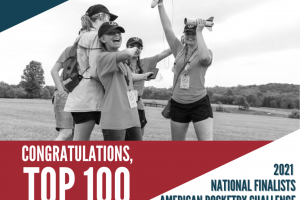How Do Gaps in Learning Occur?
I’m a firm believer that there are no silly questions. All questions are worthy to be asked. The educator in me knows that even the silliest of questions can lead to a learning opportunity. The other day a visiting parent asked me a great question – one in which few ask. The parent asked me the following: “How do gaps in learning occur?”
Great question – not a simple answer. Like most things related to human development, there is a lot ofcomplexity involved in trying to define, understand and resolve gaps in learning. Humans are complex and this translates into there being varying levels of complexity within all aspects ofwhat shapes and defines us.
Here’s a few ways that gaps in learning may occur:
- The student has not reached the level of development needed to be able to learn the content or skill being taught. Neuro-systems take time to develop and strengthen and each child’s developmental track is uniquely different. So although there are norms for typical development, within those norms there are variances between each child as it relates to their development. An example of this is learning to write. There are differing variances between young children as it relates to their fine motor ability. This is because fine motor abilities are developmental. Thesystems have to develop and strengthen before the child can master the ability to write. Learning to write one’s name requires not only the fine motor ability but also the cognitive ability as the child must be able to identify and recreate theletters in their name. When a child does not have thedevelopmental ability to learn the content or acquire the skill, a gap may be created. In the case ofpencil grasp, if the child doesn’t have the development and writing is pushed upon them, they’re likely to develop a pencil grip that is not thetypical “adult like grasp”, which makes writing more laborious.
- Switching schools or teachers may cause gaps in development, as each school (even within thesame district) and teacher operates uniquely different. What’s taught and how it’s taught in one school or by one teacher may differ from another school or teacher. If the child misses the concept or skill that was taught by one school or teacher at one time and by the other school or teacher at another time, then a gap in learning is created as thechild missed the material.
- Gaps in learning may be created when teachers do not teach in a variety of ways. We all learn differently. Some of us are more tactile, some more visual and some more auditory. Concepts and content need to be presented in a variety of ways so that children can engage with and learn thenecessary knowledge. If the approach to learning is not varied, theconcepts and/or content may not be learned by the child and thus a gap created.
- Gaps in learning may occur when there is what we call in our profession, interference. This refers to there being something that interfered with thechild’s ability to learn. This can be a tragic event like a death or an illness or it can be that there is an underlying learning difference that is interfering with the child’s ability to master particular skills or content.
So how do we prevent gaps? The best way is through mastery. At Clariden, mastery is the goal for each of our students. We want them to know their stuff. We teach in a manner that shows are students that to truly learn something is way cooler than quickly skimming and rushing through simply to pass thetest. At Clariden the test is secondary to the learning. For us the tests prepares our students for test taking (SAT, ACT, etc.) and more importantly the tests help us as their educators to identify the gaps and to gauge their growth. That’s why we assess using the NWEA and theGesell Developmental Observation (GDO-R).
For the child that gets a 90 on a test, there is still 10% that they potentially don’t know. That 10% may increase as the concepts get tougher because the foundation is not there. The foundation for knowledge needs to be firmly in place so that future knowledge has something to build upon. Mastery is key.
Check out this short Ted Talk by Sal Khan (founder of Khan Academy) regarding the need to make mastery the goal and not the test score.



